Currently on view at the Chiang Kai Shek Memorial Hall is an exhibition that chronicles the legacy of 20th century icon Albert Einstein. Synonymous with genius, the German-born physicist was propelled to world fame after a solar eclipse in 1919 provided proof to his general theory of relativity. To this day, his scientific propositions are considered fundamental to our understanding of the material universe. Beneath such far-reaching fame, however, lesser known is the man’s complex life journey as a thinker, lover, teacher and activist at a time of tremendous social and political upheaval.
Albert Einstein: Life in 4 Dimensions features a generous selection of memorabilia from the Einstein Archive of Hebrew University of Jerusalem, including written correspondences, a book collection, newspaper clippings and awards that offer an intimate glimpse into the public and private life of the science legend.
Highlights of the exhibition include The Zurich Notebook, which reveals Einstein’s struggling calculations as he worked towards the formula for relativity; hand-written correspondences between Einstein and Sigmund Freud concerning the nature of warfare; a loose page of Einstein’s theories salvaged from Nazi book burnings; and the Nobel Prize medal awarded to the scientist in 1921.
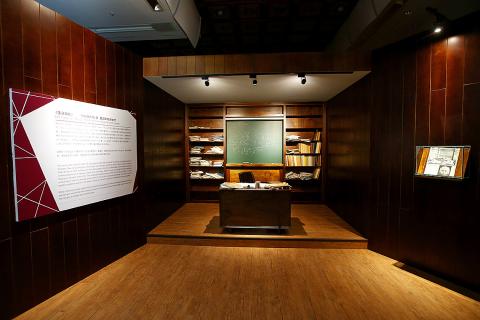
Photo Courtesy of udnFunLife
“Through this exhibit, viewers can discover more than just Einstein’s scientific prowess, but also his humanitarian spirit,” says Hanoch Gutfreud, Academic Chair of the Einstein Archives.
Taipei is the first stop of the archive’s tour through Asia, which will be followed by scheduled stops in China and Japan.
The exhibition is divided into four sections, detailing Einstein’s academic progression, personal relationships, search for faith and his eventual migration to America. His writings on science and religion reveal an interdependent connection between his spiritual views and scientific knowledge.
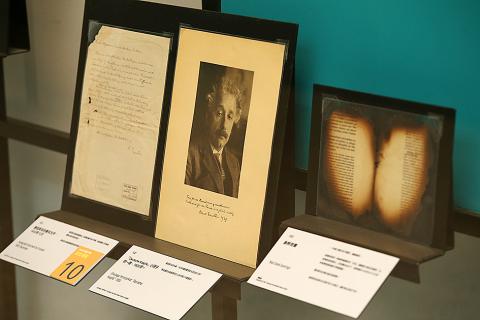
Photo Courtesy of udnFunLife
Believing in a spirituality that is based on reason, Einstein famously said: “I maintain that the cosmic religious feeling is the strongest and noblest motive for scientific research … [I]t is the most important function of art and science to awaken this feeling and keep it alive in those who are receptive to it.”
While celebrating the scientist as a natural inquisitor of universal truths, the exhibition largely avoids the more controversial aspects of Einstein’s character.
A gallery showcasing memorabilia of his personal life includes documents pertaining to his multiple affairs, while an account of his first marriage mentions his first-born child as an unresolved mystery.
The exhibition also examines Einstein’s contributions to America’s development of the atomic bomb. Einstein wrote to then-US President Franklin Roosevelt expressing concern that Germany was developing atomic weaponry in 1939, but later disapproved of the Hiroshima and Nagasaki bombings in 1945. Alongside his writings concerning war and peace, the exhibition displays a letter to Einstein from a Japanese magazine editor, who addresses Einstein with a series of questions that still resonate today:
“What are your reactions when seeing the photographic reproductions showing the destructive effects of atomic bombs?” “Why did you cooperate in the production of atomic bombs, knowing full well their such destructive power?”
In addition to the memorabilia, the show also features three interactive games developed collaboratively by National Tsing Hua University, the Astronomical Society of the Republic of China and Scientific American.
These exercises attempt to illustrate some of Einstein’s famous theories regarding space and time.
In one room, a grid projected on the floor changes shape according to the visitor’s position. In another room, visitors ride on bicycles while watching an animated film of outer space; the speed with which they crank the pedal affects the size of passing meteors in the film. Although these games try to make Einstein’s advanced ideas more accessible and fun, their virtual nature makes it difficult for the viewer to take away any profound understanding of the material world and the theories that underpin Einstein’s significance as a thinker.
Overall, Albert Einstein: Life in 4 Dimensions is an exhibition of high scholarly merit that offers a holistic portrait of Einstein without endangering his legacy.
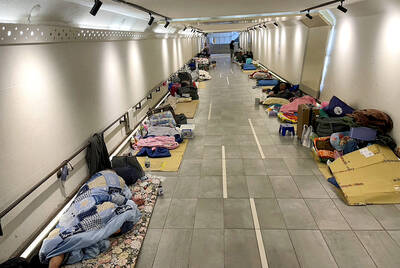
From the last quarter of 2001, research shows that real housing prices nearly tripled (before a 2012 law to enforce housing price registration, researchers tracked a few large real estate firms to estimate housing price behavior). Incomes have not kept pace, though this has not yet led to defaults. Instead, an increasing chunk of household income goes to mortgage payments. This suggests that even if incomes grow, the mortgage squeeze will still make voters feel like their paychecks won’t stretch to cover expenses. The housing price rises in the last two decades are now driving higher rents. The rental market
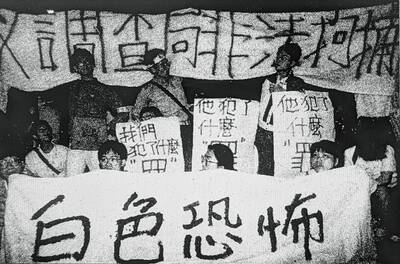
July 21 to July 27 If the “Taiwan Independence Association” (TIA) incident had happened four years earlier, it probably wouldn’t have caused much of an uproar. But the arrest of four young suspected independence activists in the early hours of May 9, 1991, sparked outrage, with many denouncing it as a return to the White Terror — a time when anyone could be detained for suspected seditious activity. Not only had martial law been lifted in 1987, just days earlier on May 1, the government had abolished the Temporary Provisions Effective During the Period of National Mobilization for Suppression of the Communist
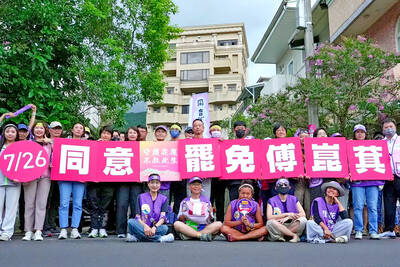
Hualien lawmaker Fu Kun-chi (傅?萁) is the prime target of the recall campaigns. They want to bring him and everything he represents crashing down. This is an existential test for Fu and a critical symbolic test for the campaigners. It is also a crucial test for both the Chinese Nationalist Party (KMT) and a personal one for party Chairman Eric Chu (朱立倫). Why is Fu such a lightning rod? LOCAL LORD At the dawn of the 2020s, Fu, running as an independent candidate, beat incumbent Democratic Progressive Party (DPP) lawmaker Hsiao Bi-khim (蕭美琴) and a KMT candidate to return to the legislature representing
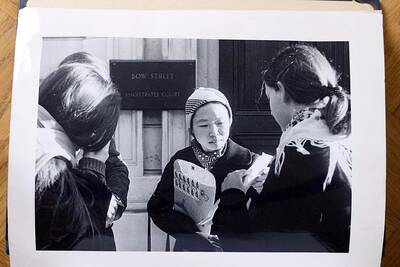
Fifty-five years ago, a .25-caliber Beretta fired in the revolving door of New York’s Plaza Hotel set Taiwan on an unexpected path to democracy. As Chinese military incursions intensify today, a new documentary, When the Spring Rain Falls (春雨424), revisits that 1970 assassination attempt on then-vice premier Chiang Ching-kuo (蔣經國). Director Sylvia Feng (馮賢賢) raises the question Taiwan faces under existential threat: “How do we safeguard our fragile democracy and precious freedom?” ASSASSINATION After its retreat to Taiwan in 1949, the Chinese Nationalist Party (KMT) regime under Chiang Kai-shek (蔣介石) imposed a ruthless military rule, crushing democratic aspirations and kidnapping dissidents from